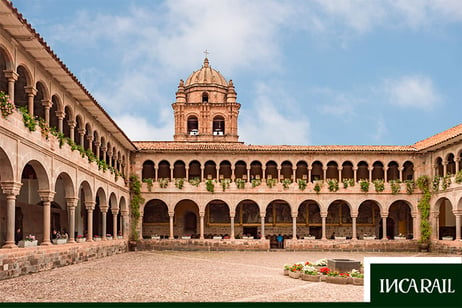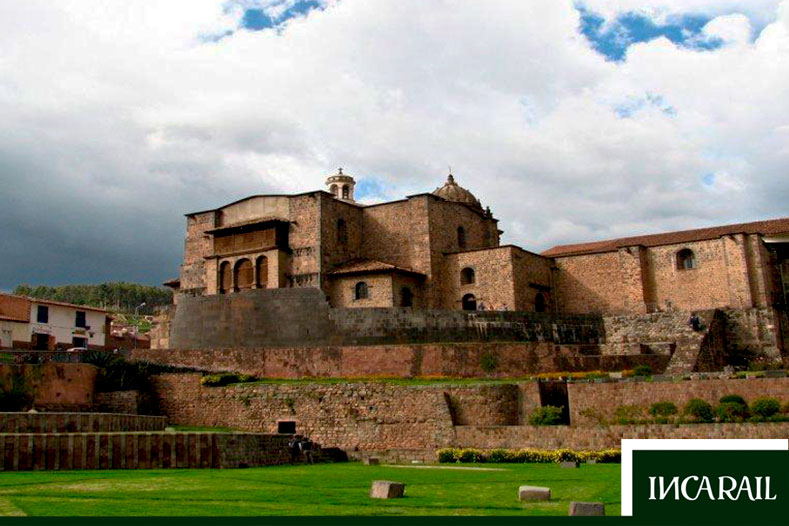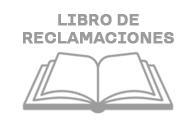Passing through Cusco is like passing through a great open-air museum and among its masterpieces is the Inca temple of Coricancha, of which only the foundations remain and on top of them stands the convent of Santo Domingo.
What you will find here?
- Coricancha history
- Location of the Coricancha
- What does Coricancha mean?
- What to visit in Coricancha?
- Ruins of the Temple of the Sun
- Santo Domingo Church and Convent
- Coricancha Museum
- Temple of the Moon
- Temple of Venus and the Stars
- Flash, Thunder and Lightning Precinct
- The Fountains
- The Solar Garden
- How to get to Coricancha?
- Coricancha entrance
- Coricancha entrance fee
- Coricancha opening hours
- Characteristics of Coricancha
- Coricancha architecture
Coricancha history
Coricancha, located in Cusco, was the most sacred temple of the Inca Empire, dedicated to the worship of the Sun God, Inti.
Representing the pinnacle of Inca architecture, its walls were originally covered with gold, symbolizing the divine connection and the opulence of the empire.
This site was not only a religious center, but also a political and social gathering place for the Incas.
Origins and Significance in the Inca Empire:
- Religious Center: Coricancha, also known as the Temple of the Sun, was the most important religious center of the Inca Empire. Located in the city of Cusco, which was the capital of the empire, this temple was mainly dedicated to the cult of the Sun God, Inti, one of the most venerated deities in the Inca cosmovision.
- Impressive Architecture: The original construction of Coricancha was a sample of the apogee of Inca architecture. Its walls were covered with gold leaf, and inside it housed gold and silver idols, ceremonial gardens and other treasures that reflected the wealth and power of the empire.
The Spanish Conquest and Transformation:
- Destruction and Looting: With the arrival of the Spanish conquistadors in the 16th century, Coricancha underwent a drastic transformation. The temple was looted, and many of its riches were melted down and sent to Spain.
- Construction of the Church of Santo Domingo: On the ruins of the Inca temple, the Spaniards built the Church and Convent of Santo Domingo, thus symbolically imposing Christianity over the Inca religion. This architectural superimposition is a clear example of the cultural syncretism that would later characterize the region.
Coricancha today:
- Symbol of Cultural Resistance: Today, Coricancha is an emblematic place that symbolizes the resistance and persistence of the Inca culture. Parts of the original Inca structure can still be seen at the base of the church and convent, highlighting the mastery of Inca construction.
- Tourist Attraction: It has become one of Cusco's main tourist attractions, attracting visitors from all over the world interested in the Inca and colonial history of Peru.
Study and Research Center: In addition, Coricancha remains an important site for scholars and researchers interested in the architecture, history and archaeology of pre-Columbian and colonial cultures in South America.
Location of the Coricancha
The Coricancha is located in the city of Cusco, which was the historical capital of the Inca Empire. Cusco is located in southeastern Peru, in the Andean region of the country.
- City: Cusco
- Country: Peru
- Geographic Region: Andean
- Specific Location: Plazoleta Santo Domingo, Cusco District
- Reference point: Next to the Church and Convent of Santo Domingo, built on the ruins of the Inca temple.
The exact location of the Coricancha is in the center of the modern city of Cusco, easily accessible and a focal point for tourists visiting the region.
The specific address is Plazoleta Santo Domingo, located in the district of Cusco, in the province and department of the same name. This important structure is located next to the Church and Convent of Santo Domingo, built over the ruins of the Inca temple, creating a unique visual and cultural blend of Inca and Hispanic architecture.
It is a site of great historical and cultural interest, both for visitors and scholars interested in the pre-Columbian and colonial history of South America.
What does Coricancha mean?
Coricancha is a Quechua word that translates as "Enclosure of Gold" or "Temple of Gold".
This name reflects the wealth and importance of the temple during the Inca Empire. "Cori" means gold, and "Cancha" translates as enclosure, enclosed place or temple.
This site was the main center of worship to the Sun God, Inti, and one of the most important and sacred temples of the Inca Empire, famous for its gold-plated walls and impressive architecture.

What to visit in Coricancha?
When you step on the sacred ground of Coricancha in Cusco, Peru, you are immersed in a world where Inca history and colonial heritage intertwine in fascinating ways.
We invite you to explore the wonders of Coricancha, from its meticulously constructed Inca walls to the artistic treasures of the colonial period.
Ruins of the Temple of the Sun
The Ruins of the Temple of the Sun in Coricancha are testimony to the extraordinary legacy of the Inca Empire. This place was the most sacred center of Inca sun worship, where the walls, according to historical accounts, were originally covered with gold. The construction techniques used in this temple are a sublime example of Inca mastery in masonry, with stones perfectly assembled without the use of mortar.
In addition to its religious importance, the Temple of the Sun served as an astronomical observatory, essential for Inca agricultural and ceremonial planning. The orientation and design of the temple reflect the Incas' deep knowledge of and connection to celestial movements.
- Location: Inside the Coricancha complex, Cusco.
- What you can find: Inca architectural remains, finely worked stone walls.
- Best time to visit: May to September (dry season).
- Entrance fee: Included in the entrance ticket to Coricancha.
Santo Domingo Church and Convent
The Church and Convent of Santo Domingo represent a fascinating fusion of Inca and Spanish cultures. Built on the ruins of Coricancha, this church is an outstanding example of Spanish colonial architecture. The Inca walls and foundations preserved beneath the colonial structure speak of the history of conquest and religious syncretism.

Inside, the church houses impressive works of religious art from the colonial era, as well as architectural elements that reveal the history of this sacred place. The coexistence of these two architectures is a visual testimony of the historical and cultural change in Peru.
- Location: Adjacent to the ruins of the Temple of the Sun in Coricancha.
- What can you find: Religious artwork, colonial architecture, Inca foundations.
- Best time to visit: All year round, with special emphasis on religious festivities.
- Entrance fee: Included in the entrance ticket to Coricancha.
Coricancha Museum
The Coricancha Site Museum is a space dedicated to deepen the understanding of Inca history and culture. The museum exhibits a collection of Inca artifacts, architectural models, textiles and tools that provide a detailed insight into life in the Inca Empire. The exhibits are designed to illustrate not only the daily life of the Incas, but also their religious beliefs, agricultural practices and architectural achievements.
In addition to Inca artifacts, the museum also offers insights into the era of the Spanish conquest and the resulting cultural syncretism. The exhibits are informative and educational, ideal for better understanding the historical context of Coricancha and Inca Cusco.
- Location: Inside the Coricancha complex.
- What can you find: Inca artifacts, historical exhibits, educational information.
- Best time to visit: All year round.
- Admission fee: Included in the entrance ticket to Coricancha.
Temple of the Moon
The Temple of the Moon in Coricancha is a site that evokes the Inca reverence for duality and balance in their cosmovision. Dedicated to the Moon, or "Mama Quilla" in Quechua, it was a fundamental place of worship, especially for rituals related to agriculture and fertility. The structures and reliefs in this temple reflect the importance of the moon in Inca mythology.
The Temple of the Moon also stands out for its impressive stone art and designs that incorporate natural and celestial elements. Your visit is an immersion into the most spiritual and mystical aspect of Inca culture.
- Location: Inside the Coricancha complex, Cusco.
- What can you find: Art and stone reliefs, lunar symbolism.
- Best time to visit: All year round.
- Admission fee: Included in the entrance ticket to Coricancha.
Temple of Venus and the Stars
The Temple of Venus and the Stars reflects the deep interest of the Incas in astronomy. Dedicated to Ch'aska, or Venus, and other constellations, this space was used to observe celestial movements and to perform rituals related to agriculture and seasonal cycles.
The architecture and decorative elements of this temple show the connection of the Incas with the cosmos. The astronomical alignments and designs incorporated in its construction underline the importance of the celestial bodies in their daily and spiritual life.
- Location: Inside the Coricancha complex, Cusco.
- What can you find: Architectural elements with astronomical alignments.
- Best time to visit: All year round.
- Entrance fee: Included in the entrance ticket to Coricancha.
Flash, Thunder and Lightning Precinct
The Enclosure of Lightning, Thunder and Lightning in Coricancha is a space dedicated to Illapa, the Inca deity of weather and storms. This place was central to rituals and ceremonies intended to appease this powerful deity, vital for agriculture and water.
The structures here feature a combination of stone art and weather-related symbolism. This enclosure is a clear example of how the Incas integrated their religious beliefs with their understanding of the natural world and its phenomena.
- Location: Inside the Coricancha complex, Cusco.
- What can you find: Symbolism related to weather and storms.
- Best time to visit: All year round.
- Entrance fee: Included in the entrance ticket to Coricancha.
The Fountains
The fountains of Coricancha were an essential part of daily and ceremonial life in the temple. The Incas were masters of hydraulic engineering, and these fountains were not only functional, but also had religious and aesthetic significance. They were used for purification rituals and as part of offerings and ceremonies.
The Inca skill in water management is evident in the precision and beauty of these structures, which formed an integrated system within the temple complex, demonstrating their respect and reverence for this vital resource.
- Location: Inside the Coricancha complex, Cusco.
- What can you find: Examples of Inca hydraulic engineering.
- Best time to visit: All year round.
- Entrance fee: Included in the entrance ticket to Coricancha.
The Solar Garden
The Solar Garden of Coricancha was a place of extraordinary beauty and significance. According to the stories, this garden contained replicas of plants and animals made of gold and silver, reflecting the wealth and artistic skill of the Incas. It was a space dedicated to the worship of the Sun and the manifestation of the power and prosperity of the empire.
Although the original gold and silver replicas no longer exist, the Solar Garden continues to be a place of interest for its history and for being an example of the Inca love for nature and their ability to recreate it in artistic forms.
- Location: Inside the Coricancha complex, Cusco.
- What can you find: Historical site where flora and fauna were represented in precious metals.
- Best time to visit: All year round.
- Entrance fee: Included in the entrance ticket to Coricancha.
How to get to Coricancha?
To get to Coricancha, located in the city of Cusco, Peru, you can follow the following directions depending on your starting point:
-
From Downtown Cusco:
- On foot: If you are in the historic center of Cusco, Coricancha is within walking distance. Most streets in the center lead to Avenida El Sol, where Coricancha is located.
- Cab: You can also take a cab. It is a convenient and economical option, especially if you are staying in a part of the city farther from the center..
-
From Cusco Airport:
- Cab or Shuttle Service: The Alejandro Velasco Astete International Airport is approximately 15 minutes drive from Coricancha. You can take a cab or shuttle service from the airport.
-
By Public Transportation:
- Buses or Colectivos: If you are familiar with Cusco's public transportation system, you can take a bus or colectivo that will take you to Avenida El Sol.
-
By Organized Tour:
- Tourist Tours: Many tourist tours in Cusco include a visit to Coricancha. This option offers you a guide and direct transportation to the site.
-
By Private Vehicle:
- Car Rental: If you have rented a car, you can drive to Coricancha. Please note that parking in downtown Cusco may be limited.
Coricancha entrance
The entrance to Coricancha, located in Cusco, Peru, generally involves an admission fee. Some important details about the entrance to Coricancha are:
-
Entrance Fee:
- The entrance fee to Coricancha is usually affordable, but varies for domestic and international tourists.
- Discounts are often available for students and children.
-
Visiting Hours:
- Coricancha has specific opening and closing hours, which may vary depending on the season or local festivities.
- It is advisable to check the updated schedule before planning your visit.
-
Cusco Tourist Ticket:
- Although Coricancha is not included in the Cusco Tourist Ticket (BTC), which allows access to several other sites in Cusco and the Sacred Valley, its affordable price makes it easily visited independently.
-
Guided Tours:
- There are options for guided tours, which can be included in the entrance fee. These tours offer detailed information and enrich the visitors' experience.
-
Ticket Purchase:
- Tickets can be purchased at the entrance of Coricancha. In high season, it is recommended to arrive early to avoid long lines.
Coricancha entrance fee
The entrance fee to the Coricancha Site Museum is S/. 15.00 for adults and S/. 8.00 for students.
It is important to keep in mind that these prices may be subject to change, so it is advisable to check them before your visit.
Coricancha opening hours
The Coricancha is open from Monday to Saturday from 08:30 to 17:30 hours and on Sundays from 14:00 to 17:00 hours.
Characteristics of Coricancha
The Coricancha, known as the "Temple of the Sun", is a site of great historical and architectural importance located in Cusco, Peru.
We share with you some of its most outstanding features:
- Religious Center of the Inca Empire: It was the most important temple in the Inca Empire, dedicated mainly to the worship of the Sun God, Inti.
- Impressive Architecture: The Coricancha is an outstanding example of Inca architecture. The walls of the original temple were covered with gold, and it is said to have housed numerous altars, idols and ceremonial offerings.
- Cultural Syncretism: After the Spanish conquest, the Coricancha was partially destroyed and the Church and Convent of Santo Domingo was built on its foundations. This superposition of buildings represents a clear example of cultural syncretism between Inca and Spanish traditions.
- Astronomical Orientation: The design and orientation of Coricancha reflect the advanced knowledge of the Incas in astronomy. It is believed that the temple was aligned to capture the sun's rays during the solstices and equinoxes.
- Temple Complex: The complex included several temples dedicated to different deities, such as the moon (Killa), the stars (Chasca), and the thunder or rainbow (Illapa).
- Sacred Garden: According to historical accounts, the Coricancha had a sacred garden with figures of animals and plants made of gold and silver, symbolizing the connection of the Incas with nature.
- Significance in the Urban Design of Cusco: The Coricancha was considered the center of the Inca universe and the starting point of the ceques, imaginary lines that connected the temple with various sanctuaries and huacas in Cusco.
Coricancha architecture
The architecture of the Coricancha in Cusco is an outstanding testimony of the advanced constructive and aesthetic level of the Inca Empire:
- Mortarless Construction: One of the most impressive characteristics of Inca architecture is its technique of building stone walls without mortar. The stones were carved with such precision that they fit together perfectly without the need for an adhesive.
- Sloping Walls and Trapezoidal Stones: Coricancha walls have a slight inward slope, a technique used to increase the seismic resistance of the structures. In addition, the stones often have a trapezoidal shape, which also contributes to the stability of the construction.
- Precious Metal Decoration: Originally, the walls of the Temple of the Sun were covered with gold leaf, and the temple gardens housed figures made of gold and silver, representing flora and fauna. This reflected not only the wealth of the Inca Empire but also their skill in metalworking.
- Symbolism and Astronomical Alignment: The orientation and design of the Coricancha had astronomical and religious meanings. It is believed that the temple was aligned to capture the sun's rays during important astronomical events such as the solstices and equinoxes.
- Syncretism in Post-Conquest Architecture: After the Spanish conquest, the Church and Convent of Santo Domingo was built directly over the ruins of Coricancha, creating a mixture of Inca and Spanish-colonial architectural styles.
- Complexity of Design: The complex was divided into different areas and temples dedicated to various deities, such as the sun, the moon and the stars, each with its own architectural and decorative characteristics.













